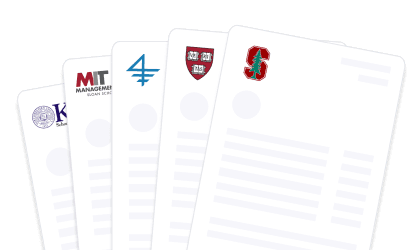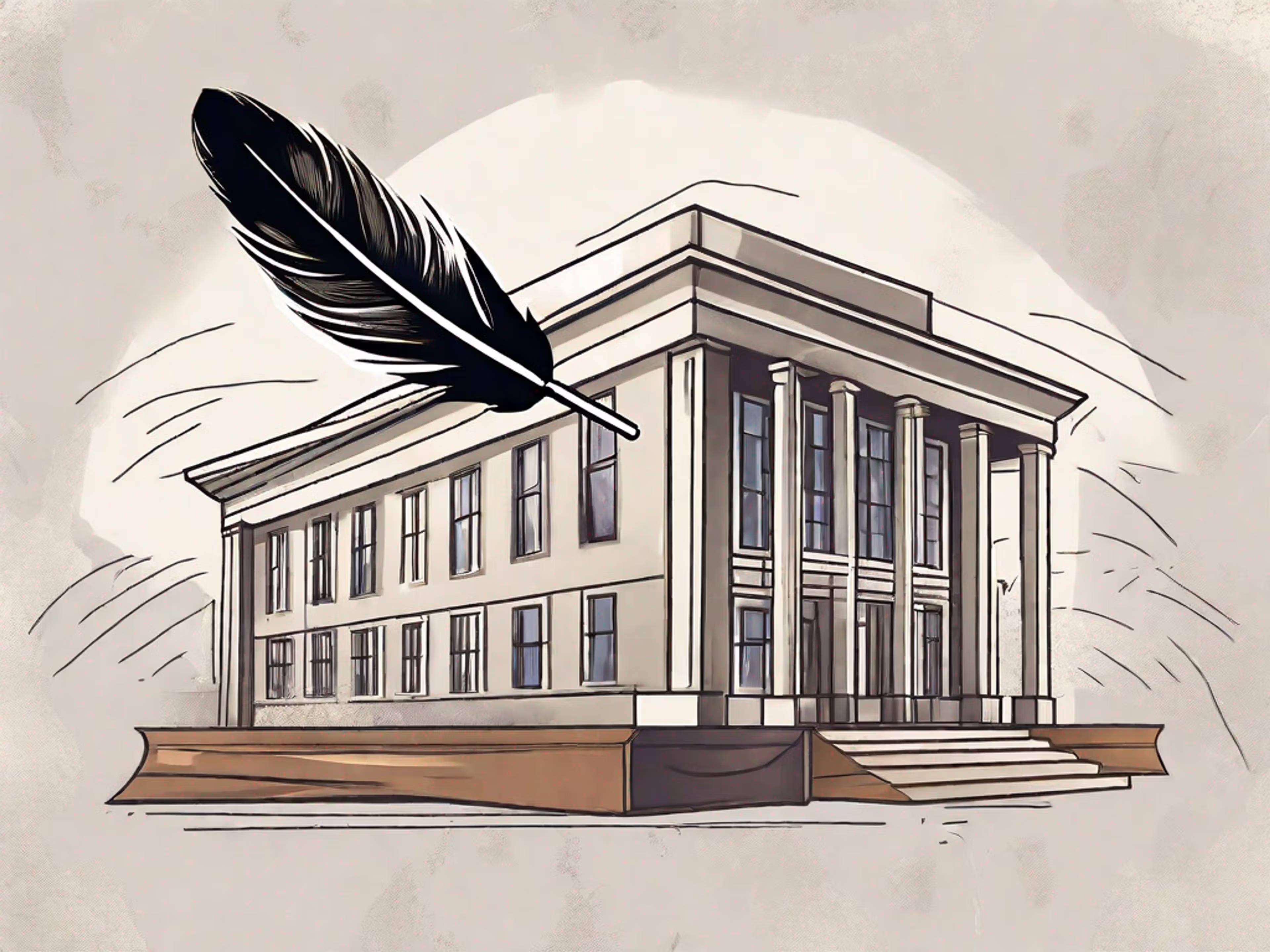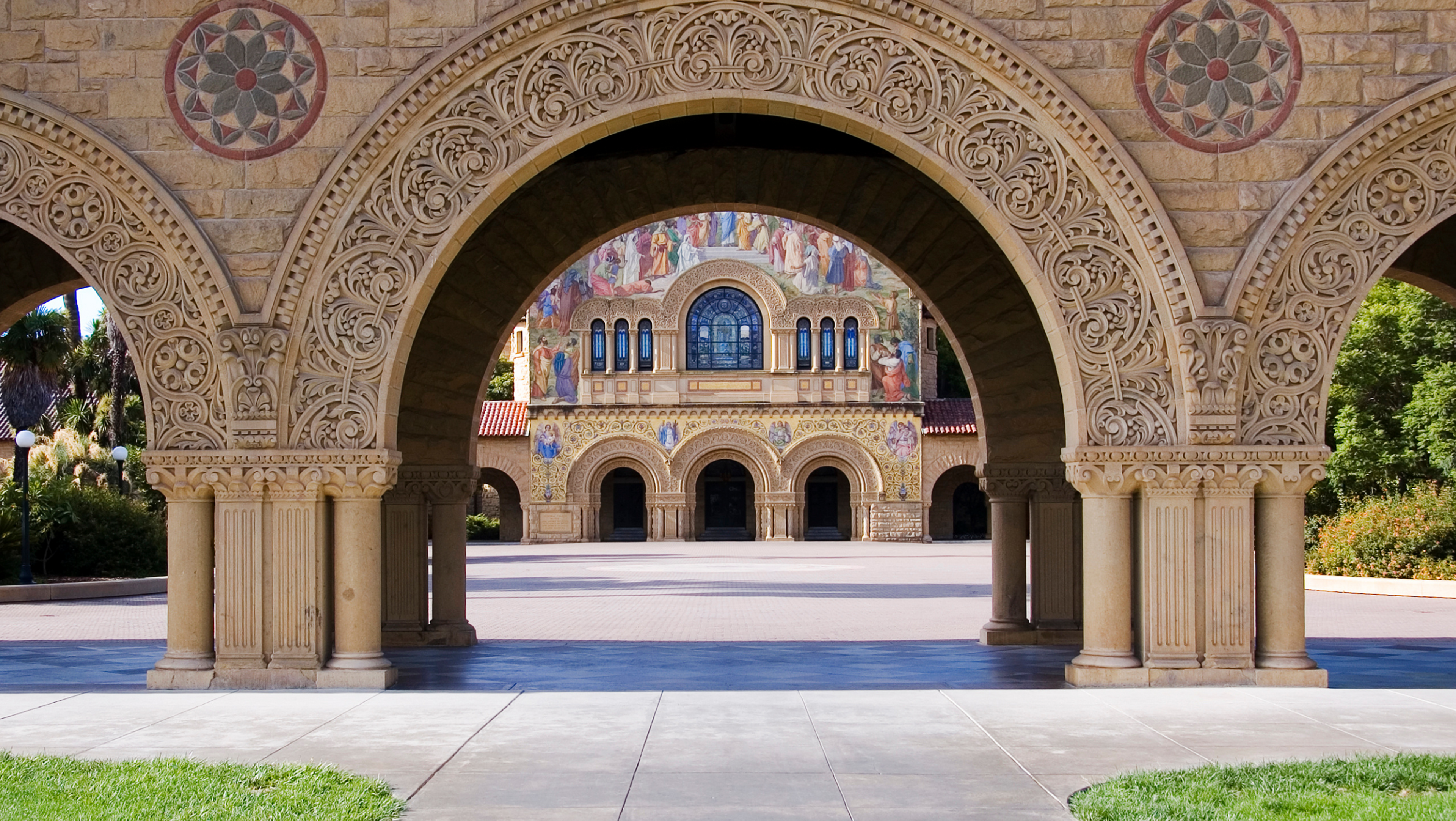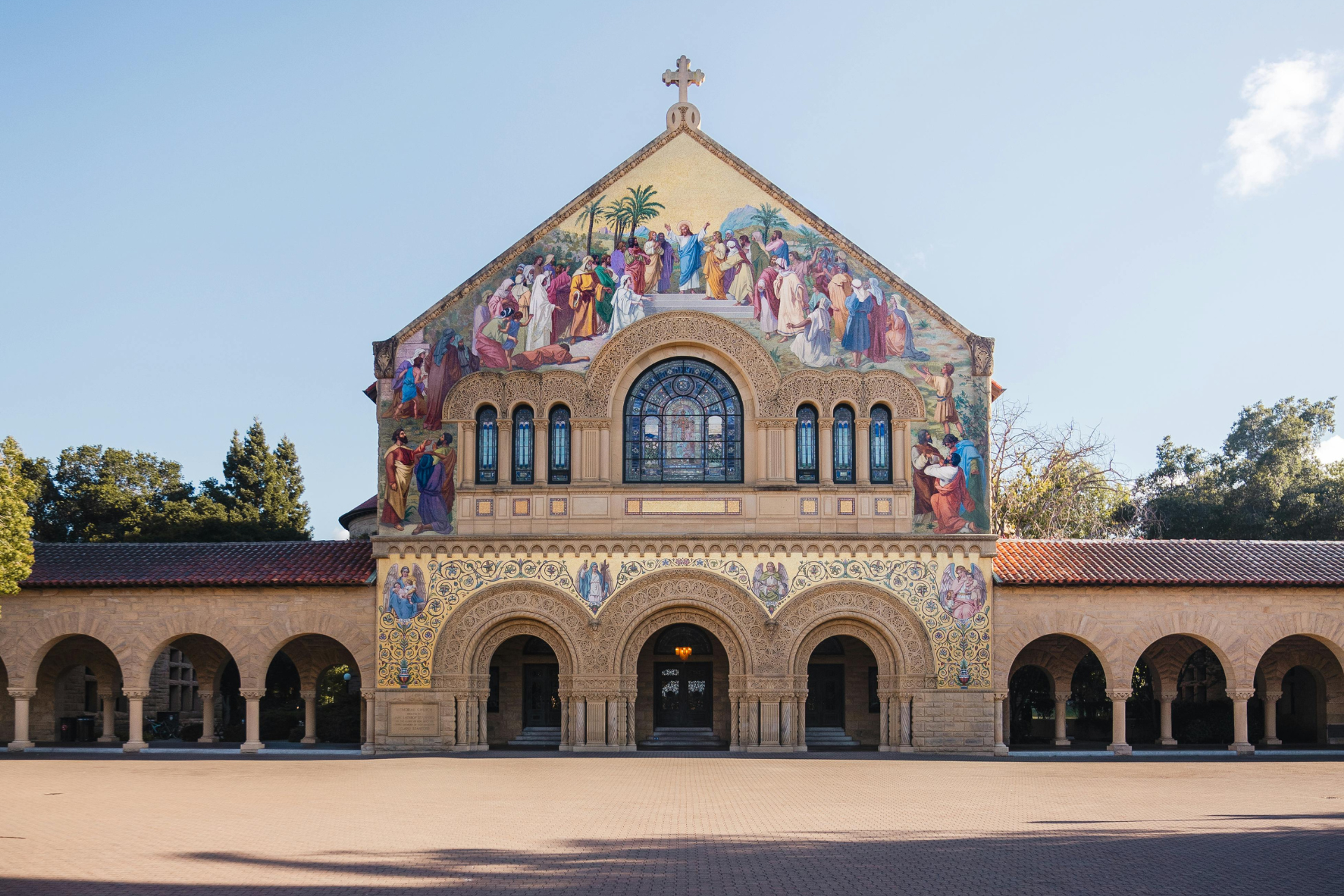
Table of Contents
Free Event

Featuring Melanie E.
How to Get a Head Start on Your MBA Application
Starting Wednesday, April 16
10:00 PM UTC · 60 minutes

Featuring Melanie E.
Are you thinking about applying to the Stanford Graduate School of Business (GSB) to pursue an MBA? If so, you've come to the right place. The letters of recommendation play a crucial role in the admissions process as they provide the admissions committee with valuable insights into your character, abilities, and potential.
In this comprehensive guide, we'll walk you through everything you need to know about Stanford GSB MBA letters of recommendation, including the questions asked, expert tips for crafting powerful letters, and examples from successful admits. So let's dive in and help you enhance your application with stellar recommendation letters!
Overview of Stanford Graduate School of Business (GSB)
Stanford Graduate School of Business (GSB) is widely recognized as one of the top business schools in the world. Known for its exceptional academic curriculum, collaborative environment, and innovative approach to leadership education, Stanford GSB attracts talented individuals from diverse backgrounds who aspire to make a significant impact in the business world.
With an acceptance rate of around 7%, gaining admission to Stanford GSB is highly competitive. The school seeks to admit individuals who not only possess exceptional academic records but also demonstrate strong leadership potential, a commitment to making a difference, and the ability to contribute to the Stanford GSB community.
The Importance of Letters of Recommendation in the Application Process
As part of the comprehensive application process, Stanford GSB requires applicants to submit two letters of recommendation. One recommendation should be from a current direct supervisor from work or the next best alternative. The other recommendation is suggested to be from someone else who has supervised you.
The letters of recommendation serve as a powerful tool for the admissions committee to gain a deeper understanding of an applicant's personal qualities and capabilities beyond what is reflected in their application essays and academic transcript. They provide an opportunity for individuals who have closely collaborated with the applicant an opportunity to offer a thorough assessment of their skills, accomplishments, and potential for success in the Stanford GSB program.
Selecting Your Recommender
When selecting individuals to write letters of recommendation, it is important to choose those who have a thorough understanding of your abilities and can provide specific examples that highlight your strengths. Ideally, they should be able to speak to your leadership potential, teamwork skills, intellectual curiosity, and personal qualities that make you a strong candidate for Stanford GSB.
The letters of recommendation should not only focus on your past accomplishments but also provide insights into your potential for future success. Admissions committee members are particularly interested in understanding how you have overcome challenges, demonstrated resilience, and shown a commitment to personal growth and development.
It is important to approach the selection of recommenders strategically, ensuring that they can provide a well-rounded and comprehensive evaluation of your abilities. This may include individuals such as professors, supervisors, mentors, or colleagues who have had the opportunity to observe your performance in different settings. However, it should never be from a family member.
Read: How to Ask for Letters of Recommendation: An Expert Guide
Read: A Coach's Guide to MBA Letters of Recommendation
Read: How to Get Started on Your Letters of Recommendation for Graduate School
Stanford GSB Recommender Questions (2024-2025)
Stanford GSB asks your recommenders to assess you on some character traits and competencies and answer three questions:
1. How does the applicant’s performance compare to that of other well-qualified individuals in similar roles? Please provide specific examples (e.g., what are the applicant’s principal strengths?). (Up to 500 words)
2. Describe the most important piece of constructive feedback you have given the applicant. Please detail the circumstances and the applicant’s response. (Up to 500 words)
3. (Optional) Is there anything else we should know? Please be concise.
Read: MBA Recommender Questions and Criteria for the Top 10 Business Schools
Expert Tips for Powerful Stanford GSB Recommendation Letters
Now that we've seen the recommender questions the admissions committee asks, let's explore some expert tips to ensure your recommendation letters make a lasting impression.
When it comes to selecting your recommenders, it is important to choose individuals who can provide unique insights into your abilities and potential. Ideally, you want recommenders who can offer different perspectives such as professional, academic, or personal. This diversity of viewpoints will give the admissions committee a well-rounded understanding of your capabilities.
Once you have selected your recommenders, it is crucial to share your story and goals with them. By helping your recommenders understand your aspirations, career trajectory, and what you hope to achieve through your Stanford GSB MBA, they will be able to tailor their letters to support your narrative. This personalized touch will make your recommendation letters more compelling and impactful.
To strengthen your recommendation letters, it is essential to provide your recommenders with specific examples of your accomplishments and the positive impact you have made in your roles. By doing so, you enable them to substantiate their claims and provide concrete evidence of your potential to contribute to the Stanford community. Remember, evidence of your impact speaks volumes and can greatly enhance the credibility of your recommendation letters.
When encouraging your recommenders to write about your strengths and character traits, it is important to emphasize the importance of showing, not just telling. Generic statements can often be vague and fail to leave a lasting impression. Instead, urge your recommenders to illustrate your strengths with concrete examples that highlight your unique qualities and abilities. This will make your recommendation letters more vivid and memorable.
While your recommendation letters need to highlight your strengths, it is equally crucial that they align with your authenticity. Your letters should reflect your true self and present an authentic and coherent portrayal of who you are. To achieve this, help your recommenders understand your values and what matters to you. By doing so, you ensure that their letters capture the essence of your character and align with your personal brand.
Time is of the essence when it comes to crafting powerful recommendation letters. Give your recommenders ample time to write thoughtful and tailored letters. It is advisable to approach them well in advance of the application deadline, providing them with all the necessary information and resources to support their writing process. By giving them sufficient time, you allow them to dedicate their full attention to crafting compelling letters that truly showcase your potential.
Lastly, after submitting your application, it is important to express gratitude to your recommenders for their time and effort. A genuine thank-you note goes a long way in building and maintaining strong professional relationships. By showing your appreciation, you not only acknowledge their support but also leave a positive impression that can have a lasting impact.
Time is of the essence when it comes to crafting powerful recommendation letters. Give your recommenders ample time to write thoughtful and tailored letters. It is advisable to approach them well in advance of the application deadline, providing them with all the necessary information and resources to support their writing process. By giving them sufficient time, you allow them to dedicate their full attention to crafting compelling letters that truly showcase your potential.
Lastly, after submitting your application, it is important to express gratitude to your recommenders for their time and effort. A genuine thank you note goes a long way in building and maintaining strong professional relationships. By showing your appreciation, you not only acknowledge their support but also leave a positive impression that can have a lasting impact.
- Select your recommenders strategically: Choose individuals who can provide unique insights into your abilities and potential, ideally from different perspectives such as professional, academic, or personal.
- Share your story and goals: Help your recommenders understand your aspirations, career trajectory, and what you hope to achieve through your Stanford GSB MBA. This will enable them to tailor their letters to support your narrative.
- Evidence of your impact: Provide your recommenders with specific examples of your accomplishments and the positive impact you have made in your roles. This will help them substantiate their claims and provide evidence of your potential to contribute to the Stanford community.
- Show, don't tell: Encourage your recommenders to illustrate your strengths and character traits with concrete examples rather than relying on generic statements.
- Stay true to your values: It's crucial that the recommendation letters align with your own authenticity and reflect your true self. Help your recommenders understand your values and what matters to you, ensuring their letters present an authentic and coherent portrayal of who you are.
- Provide ample time: Give your recommenders sufficient time to craft thoughtful and tailored letters. It's advisable to approach them well in advance of the application deadline, providing them with all the necessary information and resources to support their writing process.
- Express gratitude: After submitting your application, extend your heartfelt appreciation to your recommenders for their time and effort. A genuine thank you note goes a long way in building and maintaining strong professional relationships.
Get access to additional LOR resources, including a video guide and customizable Recommender Prep Doc on Leland+!
Example GSB Letters of Recommendation From Successful Admits
While every applicant's journey and recommendation letters are unique, it can be helpful to see examples of successful letters that have made a positive impact on the admissions committee.
Here are a couple of excerpts from actual recommendation letters:
"I have had the privilege of working closely with [Applicant's Name] for three years, during which time he has consistently demonstrated exceptional leadership skills and a keen ability to think strategically. One particular instance that stands out is when he spearheaded a cross-functional team to overhaul our company's supply chain processes, resulting in a 20% increase in efficiency and a significant cost reduction."
"I have known [Applicant's Name] for over five years, both as a colleague and a friend. During this time, I have witnessed his unwavering commitment to making a positive impact in the community. His involvement in various volunteer initiatives, mentoring programs, and advocacy for underrepresented groups showcases his genuine dedication to fostering inclusivity and social change."
These examples serve as a testament to the power of well-crafted letters that effectively highlight an applicant's strengths, accomplishments, and potential.
Stanford GSB Letters of Recommendation FAQs
Here are some frequently asked questions regarding the Stanford GSB letters of recommendation:
Can I submit more than two letters of recommendation?
- No, Stanford GSB requires exactly two letters of recommendation.
Should I choose recommenders based on their job titles?
- Recommenders should be chosen based on their knowledge of your abilities and potential, rather than their job titles.
Can my recommenders submit their letters in a language other than English?
- While Stanford GSB prefers letters in English, they will accept non-English letters if they are accompanied by certified translations.
Can I see my recommendation letters before they are submitted?
- No, once you waive your right to view the letters, they remain confidential and cannot be accessed by you.
Now armed with a comprehensive understanding of the Stanford GSB MBA letters of recommendation, you can confidently approach your recommenders and provide them with the necessary guidance and information to support your application effectively. Remember, choose your recommenders wisely, share your story and goals, and provide them with specific examples that highlight your impact.
By following these expert tips and examples, you can significantly enhance your chances of securing a coveted spot in the Stanford GSB MBA program. Good luck!
Read more:


















